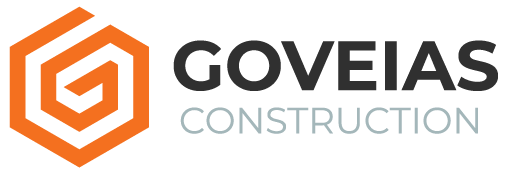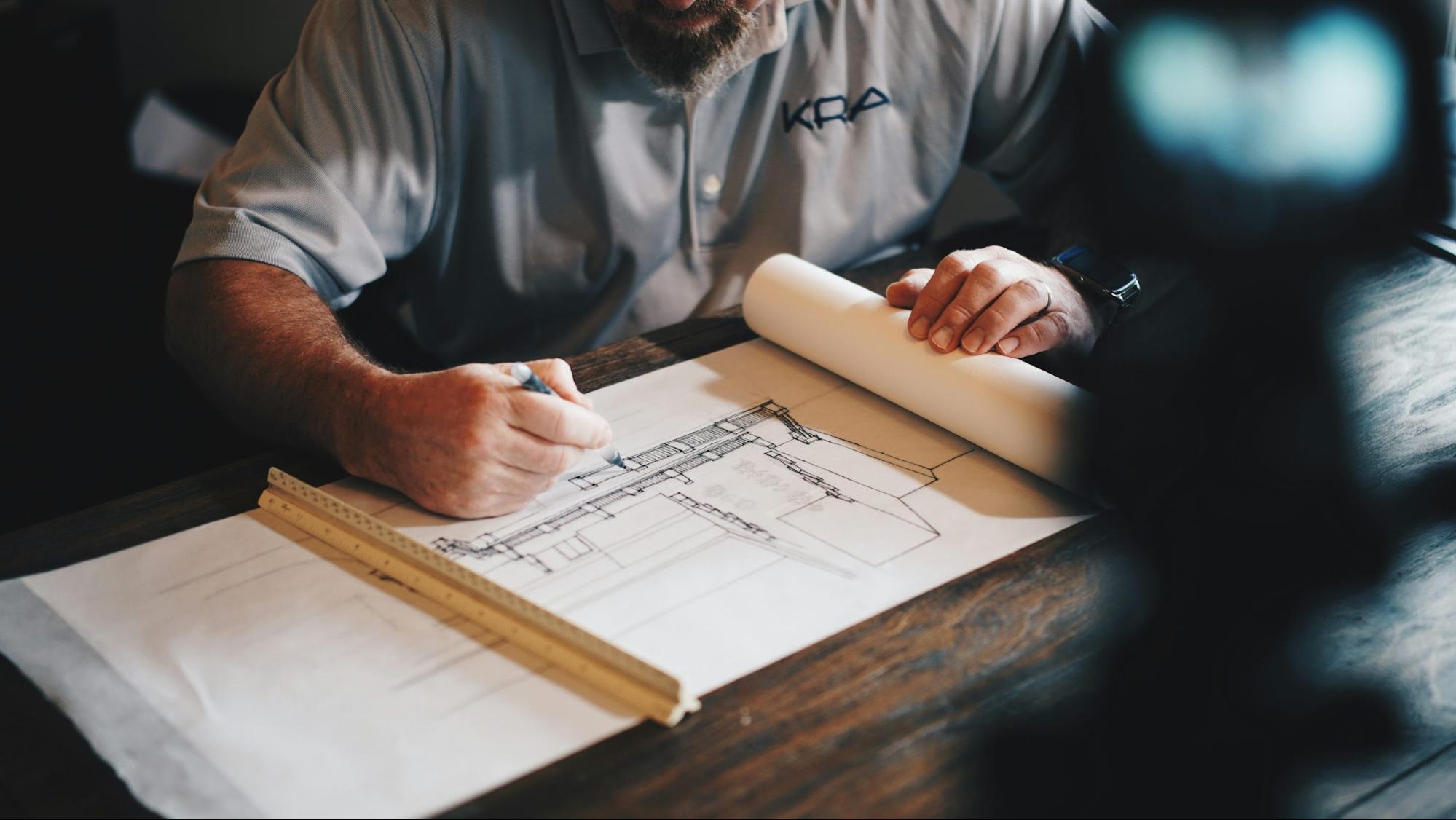
Challenges in commercial construction can vary from scheduling delays and budget overruns to complex regulatory requirements. Each of these factors can impact project timelines and profitability.
- Delays are one of the most common challenges in commercial construction, often caused by supply chain disruptions, unforeseen site conditions, or slow permit approvals.
- Budget constraints also pose a major challenge, with fluctuating material costs and labor shortages adding financial strain.
- Complying with local building codes and regulations can be time-consuming and costly if not managed correctly.
These challenges can lead to inefficiencies, financial setbacks, and extended project timelines without strategic planning.
However, you can overcome these obstacles with the right expertise and proactive solutions and achieve successful project execution.
At Goveias Construction, we specialize in helping businesses navigate challenges in commercial construction through expert project management, cost-effective solutions, and regulatory compliance support.
Our tailored approach ensures that your project remains on schedule, within budget, and fully compliant with all legal requirements.
This article explores the most common challenges in commercial construction and provides insights into how to overcome them effectively. Let’s dive in!
Overcoming challenges in commercial construction: Scheduling delays
Delays can lead to increased costs, missed deadlines, and strained stakeholder relationships. Understanding the primary causes of these delays and implementing proactive solutions can improve project efficiency and ensure timely delivery.
Common causes of construction delays
Several challenges in commercial construction contribute to scheduling setbacks. These include:
- Supply chain disruptions: Material shortages, late deliveries, or unexpected cost fluctuations can stall progress and force project managers to reschedule key tasks.
- Regulatory approvals and permits: Complex zoning laws and building codes can slow down construction if necessary approvals are delayed.
- Labor shortages: A lack of skilled workers can reduce productivity, especially when high-demand trades are involved.
- Weather conditions: Extreme weather, such as heavy snowfall, can halt construction and push back timelines.
- Scope changes: Last-minute design modifications or unforeseen site conditions lead to adjustments that extend the project schedule.
Strategies to minimize delays
Addressing these challenges in commercial construction early in the planning phase is key to mitigating risks and keeping projects on track. Some of the most effective strategies include:
Developing realistic timelines
Creating a well-structured project timeline is crucial for avoiding unnecessary delays. A successful schedule should include:
- Built-in buffer periods: Allocating extra time for critical phases to absorb unexpected disruptions without derailing the entire project.
- Task dependencies: Identifying and sequencing tasks properly to prevent bottlenecks and ensure a smooth workflow.
- Regular progress reviews: Scheduling frequent evaluations to track milestones and adjust timelines as needed.
Streamlining approval processes
Regulatory approvals and permitting pose significant challenges in commercial construction that can impact timelines. To expedite this process:
- Engage with regulatory authorities early: Establish communication with permitting agencies in advance to clarify requirements and anticipate potential challenges in commercial construction.
- Ensure comprehensive documentation: Submit all necessary paperwork accurately and on time to avoid rework or rejection.
- Leverage local expertise: Collaborate with consultants who understand zoning laws and building codes to ensure compliance.
Enhancing supply chain management
Material shortages and late deliveries can lead to costly project slowdowns. To mitigate these risks:
- Build strong supplier relationships: Establish partnerships with reliable vendors to ensure timely material availability.
- Utilize predictive analytics: Leverage data-driven insights to forecast demand and proactively order materials.
- Maintain backup suppliers: Identify alternative sources to prevent dependency on a single supplier.
The Goveias Construction approach to delay prevention
We understand the impact that delays can have on your business. That’s why Goveias Construction leverages industry-leading strategies, predictive scheduling, and supply chain optimization to mitigate risks and overcome challenges in commercial construction.
Effective budget control to avoid challenges in commercial construction
One of the most significant challenges in commercial construction is maintaining financial control while ensuring project quality and efficiency.
Without proper budget management, costs can spiral out of control, leading to financial strain and project delays.
The importance of accurate cost estimates
Cost overruns are one of the biggest challenges in commercial construction, making precise cost estimation a crucial first step. A well-defined budget accounts for all project variables, from material costs and labor rates to permits and unforeseen contingencies.
Construction teams can prevent budget shortfalls, optimize resource allocation, and maintain financial control throughout the project by integrating detailed planning and financial forecasting early on.
Leveraging technology for budget management
Digital tools and software solutions have revolutionized cost control in commercial construction. These platforms offer real-time expense tracking, forecasting, and reporting capabilities. These technologies help:
- Automate budget tracking and expense approvals.
- Provide data-driven insights to prevent overspending.
- Integrate with project management systems for a seamless workflow.
Strategies to prevent budget overruns
Proactive financial management is crucial throughout the project lifecycle, as construction projects are susceptible to cost fluctuations, unforeseen issues, and market volatility. Effective strategies to control costs and mitigate challenges in commercial construction include:
Establishing contingency funds
Setting aside 5-10% of the total budget for unexpected expenses is essential. Construction projects often encounter material price increases, labor shortages, or site complications. A well-planned contingency fund is a financial safeguard, allowing projects to continue without disruptions.
Regular cost audits and financial reviews
Conducting periodic budget reviews helps identify discrepancies, track expenditures, and adjust financial forecasts. Regular audits ensure that financial reports align with actual spending, preventing budget overruns and other financial challenges in commercial construction.
Advanced budgeting software can provide real-time expense tracking and predictive analytics, enhancing financial oversight and reducing risks.
Value engineering for cost optimization
Value engineering involves assessing alternative materials, construction methods, and procurement strategies to cut costs without compromising quality. For example, prefabricated materials can streamline assembly, lower labor costs, and reduce waste while ensuring efficiency.
Contractor and supplier negotiations
Locking in fixed-price contracts with suppliers and subcontractors minimizes the risk of cost escalation due to market fluctuations. Establishing long-term partnerships with reliable vendors can lead to bulk discounts, priority service, and stable pricing, helping maintain financial predictability and reducing issues.
Smart resource allocation
Optimizing workforce scheduling, material procurement, and equipment use prevents inefficiencies that drive up costs. Ensuring that the right resources are available at the right time reduces downtime, prevents costly last-minute purchases, and avoids unnecessary financial challenges in commercial construction.
The Goveias Approach to cost management
Effective cost management starts long before construction begins. At Goveias Construction, we provide meticulous budget planning, contingency allocation, and ongoing financial oversight to ensure a seamless process. Our structured approach keeps costs predictable and manageable from start to finish.
Ensuring compliance with regulations in commercial construction
Regulatory compliance is one of the most complex challenges in commercial construction, impacting timelines, costs, and overall project success.
Compliance is essential to avoid legal risks, costly fines, and potential delays.
Understanding key regulatory requirements
Every commercial construction project must adhere to multiple regulations at the federal, state, and local levels. Some of the most critical requirements include:
Zoning Laws
Zoning laws regulate land use and define what type of construction is allowed in specific areas. These laws ensure that developments align with the community’s urban planning strategy. Key zoning considerations include:
- Land use classification: Properties are typically zoned for residential, commercial, industrial, or mixed-use purposes. Developers must ensure their project aligns with the site’s zoning designation.
- Building height and density restrictions: Some areas impose height limits or restrictions on the number of units per acre to maintain the neighborhood’s character.
- Parking requirements: Many municipalities set minimum parking space requirements based on building size and occupancy type. Failing to meet these standards can result in costly redesigns.
- Setback regulations: These rules dictate how far structures must be positioned from property lines, streets, and other buildings to ensure safety and accessibility.
Building Codes
Building codes ensure all structures are designed and constructed to meet safety, functionality, and efficiency standards. These codes are established by agencies such as the International Code Council (ICC) and are often adopted at the state and local levels. Key building code requirements include:
- Structural integrity: Buildings must be engineered to withstand environmental stressors, such as wind, earthquakes, and snow accumulation, based on geographic location.
- Fire safety standards: Regulations require fire-resistant materials, emergency exits, sprinkler systems, and smoke detection systems to minimize risks in case of fire.
- Accessibility compliance: The Americans with Disabilities Act (ADA) mandates features such as wheelchair ramps, elevators, and appropriate door widths to ensure accessibility for all individuals.
- Energy efficiency: Many building codes now require sustainable designs, including insulation standards, efficient HVAC systems, and optimized lighting to reduce energy consumption.
Environmental regulations
Environmental laws in commercial construction ensure that projects minimize their ecological impact and promote sustainability. These regulations are enforced by agencies such as the Environmental Protection Agency (EPA) and local environmental boards.
- Waste management: Construction projects must properly dispose of hazardous materials, recycle debris when possible, and follow waste disposal protocols.
- Stormwater management: Sites must implement drainage solutions to prevent erosion, flooding, and contamination of local water sources.
- Air quality control: Construction activities that produce emissions, such as dust or volatile organic compounds (VOCs) from paints and adhesives, must follow air quality guidelines to limit pollution.
- Water conservation measures: Regulations often require water-efficient plumbing fixtures and landscaping methods, such as rainwater harvesting systems or drought-resistant plants.
Occupational Safety and Health Standards (OSHA Regulations)
Worksite safety is a primary concern in commercial construction, with the Occupational Safety and Health Administration (OSHA) setting strict guidelines to protect workers. Compliance with OSHA standards reduces workplace accidents and helps mitigate challenges in commercial construction. Key safety regulations include:
- Fall protection: Employers must provide guardrails, safety harnesses, and fall arrest systems when working at heights.
- Hazardous material handling: Contractors must follow protocols for storing and disposing of chemicals, asbestos, and other hazardous substances.
- Personal Protective Equipment (PPE): Construction workers must wear hard hats, gloves, steel-toe boots, and high-visibility vests to reduce injury risks.
- Job site safety training: Regular safety training sessions and emergency response plans must be in place to prepare workers for potential hazards.
Failure to comply with these regulations can result in permit denials, project shutdowns, and financial penalties, making regulatory expertise essential for overcoming challenges in commercial construction.
The importance of local expertise in compliance
Each region has its own set of construction laws, making it essential to work with specialists who understand local regulations. Experienced contractors ensure compliance by:
- Conducting pre-construction assessments to identify potential regulatory roadblocks.
- Coordinating with local permitting offices to streamline the approval process.
- Keeping up to date with changing regulations that may affect ongoing or future projects.
How Goveias Construction ensures regulatory compliance
At Goveias Construction, we specialize in assessing challenges in commercial construction, ensuring full compliance with zoning laws, safety codes, and environmental regulations. Our team of experts:
- Conducts in-depth feasibility studies to address legal requirements early.
- Coordinates with regulatory bodies to streamline permits and inspections.
- Implements best practices to ensure long-term compliance and risk mitigation.
Smart solutions for complex challenges in commercial construction

Navigating the challenges in commercial construction requires expertise, strategic planning, and proactive management.
From scheduling delays to budget overruns and regulatory compliance, each project stage demands careful attention to ensure success.
At Goveias Construction, we specialize in overcoming these challenges in commercial construction through meticulous planning, cutting-edge technology, and a commitment to quality. Our experience in project management, cost control, and regulatory compliance allows us to deliver seamless, on-time, and on-budget construction solutions.
Let Goveias help you handle the complexities of commercial construction. Reach out today to discuss your project and discover how our expertise can drive your success.
Contact us to start planning your next commercial build!





